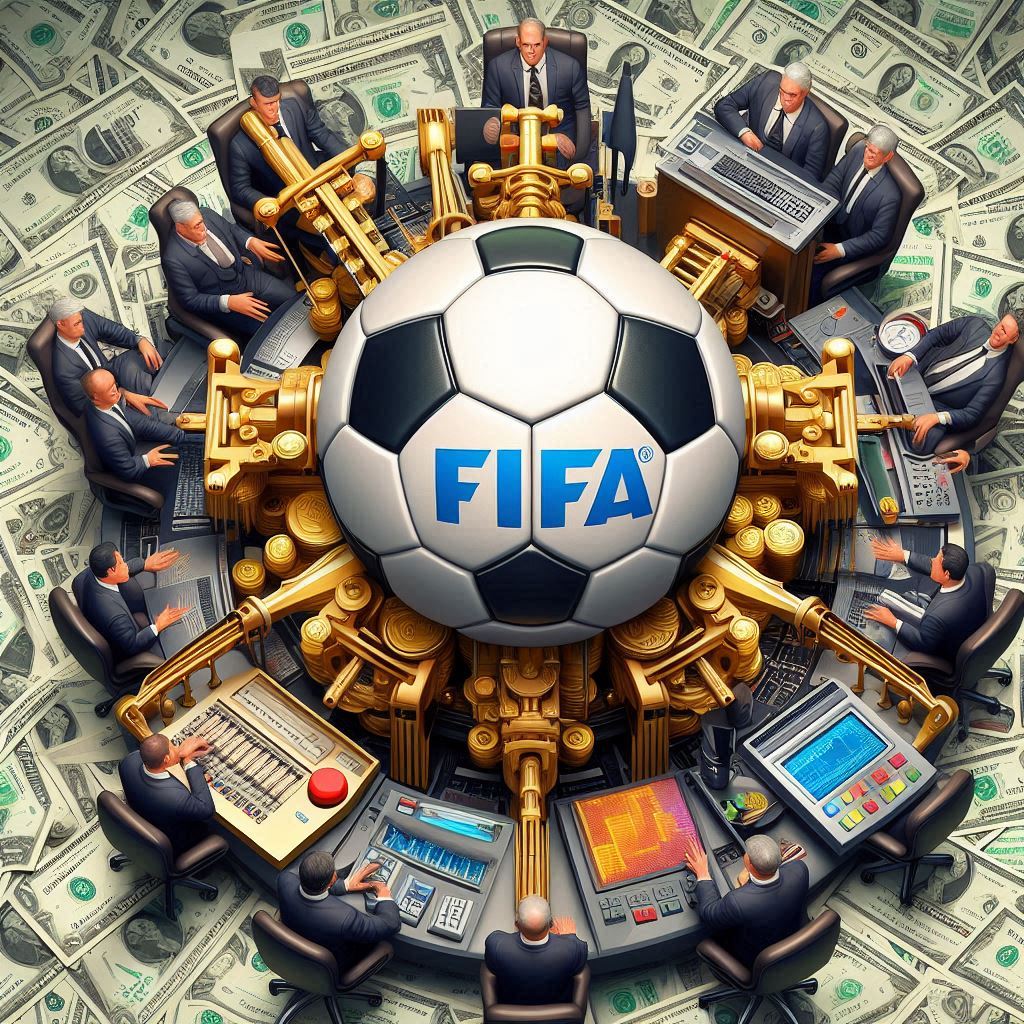The Financial Backbone of FIFA: How Money Shapes Global Football
Football is not just the world’s most popular sport—it’s a massive global industry, and at the heart of it all is FIFA, the governing body that oversees the international game. While the beauty of football lies in its simplicity and universal appeal, the financial machinery driving the sport is anything but simple. From lucrative sponsorships to multi-billion-dollar broadcasting deals, the financial forces shaping FIFA play a critical role in how the game is played, consumed, and experienced by fans worldwide.
The Size and Scope of FIFA’s Financial Ecosystem
FIFA, the Fédération Internationale de Football Association, operates in a world where money flows in all directions—from players’ salaries to sponsorship contracts, from broadcast revenues to ticket sales. The sheer scale of FIFA’s financial operations is staggering. In 2022, FIFA’s revenue was estimated at $7.5 billion, driven largely by events like the FIFA World Cup, but also by its growing influence in the football ecosystem as a whole.
The financial backbone of FIFA is not just about organizing tournaments; it’s about maintaining a complex web of partnerships with global sponsors, broadcasting networks, and national associations, all while ensuring the continued growth and sustainability of football across the globe.
Revenue Streams: A Deep Dive into FIFA’s Financial Model
FIFA’s revenue streams come from several key areas, and their financial success depends on maintaining a balance between these factors.
-
Broadcasting Rights
Broadcasting rights are one of FIFA’s most lucrative revenue sources. The FIFA World Cup alone generates billions through television and digital media rights. For example, in the 2018 World Cup, FIFA secured around $3 billion from TV deals, with rights sold to major networks across the world. This continues to grow, as new digital platforms seek to tap into the massive audience that football commands.With the rise of digital media and streaming services, FIFA has diversified its strategy by negotiating deals with platforms like YouTube, Facebook, and local streaming services, ensuring a broad audience reach. The explosion of mobile viewing also makes global broadcasts more accessible than ever before.
-
Sponsorship and Partnerships
FIFA partners with a range of multinational corporations that contribute billions in sponsorship. The biggest names—such as Adidas, Coca-Cola, Hyundai-Kia, and Qatar Airways—are just a few of the high-profile sponsors associated with FIFA events. For instance, the FIFA World Cup alone generates upwards of $1 billion from sponsors, and this continues to grow as brands seek exposure to FIFA’s massive global fanbase.Sponsorship deals help cover the substantial costs associated with organizing the World Cup and other FIFA competitions, while also generating additional revenue for the organization. These deals are mutually beneficial, as companies gain access to a massive, passionate audience, while FIFA secures the funds needed to manage its tournaments.
-
Ticket Sales
While broadcasting and sponsorship deals bring in huge amounts of money, ticket sales still represent a vital part of FIFA’s financial structure. Fans flock to stadiums around the world to witness the spectacle of the FIFA World Cup, Confederations Cup, and other FIFA-run tournaments. In 2018, ticket sales for the World Cup were estimated to be worth about $500 million. Given the growing popularity of football and the increasing number of fans traveling internationally to attend matches, this revenue stream continues to see impressive growth. -
Merchandising
Merchandise sales, including licensed products such as jerseys, balls, and other memorabilia, form another essential revenue stream for FIFA. The FIFA World Cup serves as the pinnacle event for global football merchandising, with fans eager to purchase items that commemorate the tournament or represent their national teams. Major sponsors like Adidas also see a substantial portion of their revenue from football-related merchandise.
The Cost of Organizing FIFA’s Premier Events
While FIFA generates huge sums of money, it also faces substantial costs in organizing events, particularly the World Cup. The cost of hosting the World Cup has been a topic of debate for decades, especially as host countries must invest in infrastructure—stadiums, transportation, security, and other facilities—that can run into the billions. For example, Qatar’s investment in the 2022 World Cup was reported to exceed $200 billion, making it the most expensive World Cup in history.
FIFA must also account for operational costs, including staffing, logistics, and technology to ensure smooth execution. While the revenue from broadcasting and sponsorships covers these expenses and more, it is important for FIFA to maintain financial discipline to ensure the profitability of future tournaments and to distribute funds effectively among member associations and developmental programs.
Financial Fair Play (FFP) and the Growth of Football Leagues
While FIFA’s financial influence is evident on the international stage, it is also felt on the domestic level through the implementation of rules like Financial Fair Play (FFP). The FFP regulations, which were introduced by UEFA (though FIFA also plays a role in shaping global football governance), aim to prevent clubs from spending beyond their means and ensure that financial activities in football leagues are sustainable.
These rules seek to promote long-term stability in the sport and prevent clubs from accumulating unsustainable debt. The regulations have led to more balanced competitions, ensuring that football is not dominated by just a few rich clubs, and providing an opportunity for clubs from various parts of the world to compete on a more equal financial footing.
Challenges and Controversies in FIFA’s Financial Model
Despite its immense financial success, FIFA has faced its share of controversies regarding financial management. Over the years, FIFA has been embroiled in corruption scandals, with former officials being convicted for accepting bribes in exchange for lucrative broadcasting and sponsorship deals. These scandals have damaged the organization’s reputation, raising concerns about transparency and governance.
However, FIFA has taken steps to reform its financial governance and increase transparency in recent years. The appointment of independent auditors, changes to voting processes, and the introduction of stricter regulations have been part of efforts to regain public trust and ensure that the sport’s financial resources are being used appropriately.
Conclusion: Money and the Future of Football
FIFA’s financial model is both intricate and powerful, supporting the global growth of football while managing the enormous costs of organizing tournaments and sustaining the sport across the world. The money flowing into FIFA from broadcasting deals, sponsorships, and merchandise sales has allowed the organization to elevate football to a truly global phenomenon. However, it also raises important questions about governance, fairness, and sustainability.
As the sport continues to evolve, the role of finance will remain central to FIFA’s ability to innovate, grow, and maintain its position at the heart of global football. Whether through new sponsorship opportunities, emerging digital platforms, or stricter financial regulations, the financial landscape of FIFA will undoubtedly continue to shape the game in the years to come.



